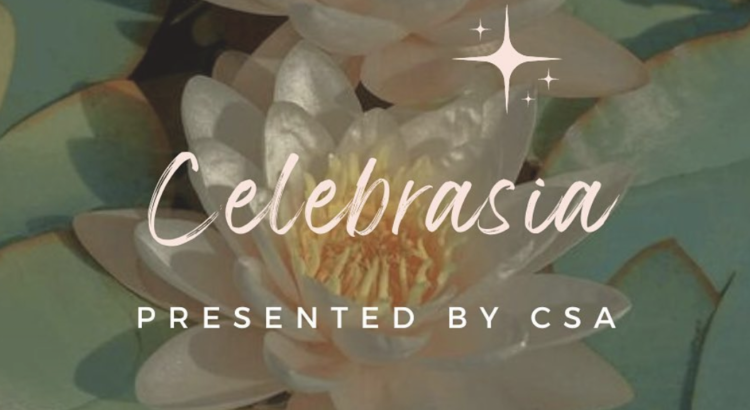I arrived promptly at 5:15, and through the windows of Mason Hall, I could see the place was already swarmed. The performances wouldn’t start until 6:30, but eager supporters ravaged the food booths, arriving early to secure good seats and snag Asian snacks like scallion pancakes, spam musubi, samosas, onigiri, tea eggs, and dumplings, just to name a few.
After destroying the best tofu pudding of my life, and a quick fishbowl study sesh (grind never stops), we headed to auditorium A to catch the performances. Only to find an overflow of people out into the hall. There was absolutely no way to get a seat, let alone see past the crowd of heads cramming the walkway. Despite many technical difficulties, and my late arrival to the show, the student groups were a hit. From the doorway of the auditorium, through the screen of a phone filming between two heads (shout out to the dude who was recording), we gasped, bug-eyed at Revolution Yo-yo’s flying tricks and coordinated routine to “Stereotype” by STAYC. When they threw and caught their yo-yos and jumped to the beat of the song, the audience emitted oohs, ahs, and wahs.
By the time the intermission hit, we were able to finally find seats and sit down. Pretending we were a part of Seoul Juice, who were all suited up in forest, olive, and dark green (one member even dyed their hair green), we wove through the crowd with ease. With the fairy lights and floral compositions framing the stage, the band resembled Christmas trees, a little grove of them. They absolutely murdered their new setlist, blazing through “Pink + White” by Frank Ocean, “Jealous” by Gummy and Ailee, and “Hype Boy” by NewJeans with character and ease. Suzy’s high notes alone were enough to bring about collective chills. Nods and grimaces of admiration (expressions like that of K-drama characters after downing a smooth shot of soju) between members solidified a sense of not only skill, but group support and dynamic. Their unique color showed when they grooved with one another during instrumental riffs. Like when Darren swooned against the back of the stage when one of the new members sang solo. Or when the mics started beatboxing (more tech issues!) and a few members stalled while the situation was being sorted out. The distraction, in the form of playing around with pleasant, jazzy sounds, made the dim auditorium feel like a street-side restaurant in Italy. Along with roars towards individual members of the band, cheers from the audience (“Slay Juice”) hyped the whole group up.
Seoul Juice performing Pink + White.
As a (mediocre) dancer and dance enthusiast, I especially enjoyed the dance groups’ performances. DB3, in matching schoolboy outfits, had the audience barking, singing along, and screaming fanchants. rXn demonstrated a versatile variety of dances that blended the traditional with trendy.
rXn during two different dances.
FunKtion’s final pose.
“Hype Boy” came on again during Female Gayo’s performance medley. The K-pop dance group flaunted the strengths they’re known so well for: sharp stage presence, clean coordination, and charming charisma. The choreography caught every eye; mine were glued, dry from forgetting to blink. And I wasn’t the only one. The person sitting in front of me was filming a literal fancam for one of the members.
So when the speakers stopped, mid-song, it was all the more disappointing, for both the audience and the performers. Some members kept dancing, while the other half froze in their positions, mid-step; both moves oozing professionalism. The music was fixed, the song replayed, they got back into formation again. But the technical difficulties were still being difficult; as soon as the song started back up, it grinded to a halt again, at the same time as before. Luckily, third time was a charm, and they were able to finish out the performance both smoothly, and with a bang.
Female Gayo while waiting for the music to get fixed.
I wasn’t able to see nor write about every group, but I look forward to next year’s Celebrasia, and I’m sure many can say the same!
I left with several shazamed songs in my pocket, a satisfied stomach, and cheeks that hurt from cheesing.







